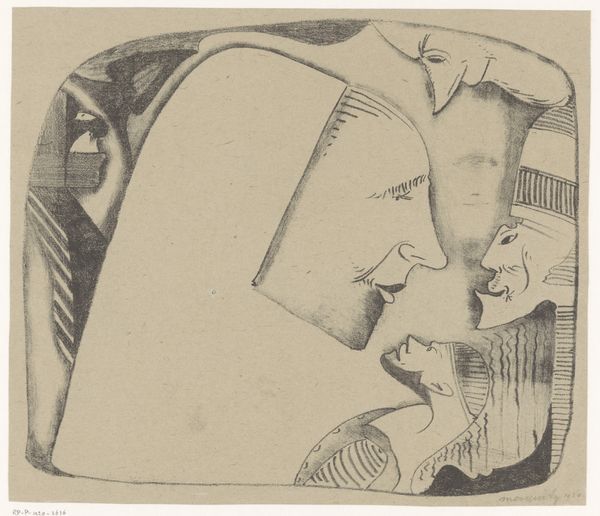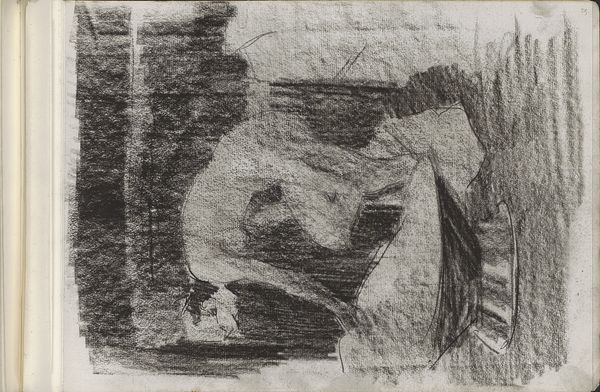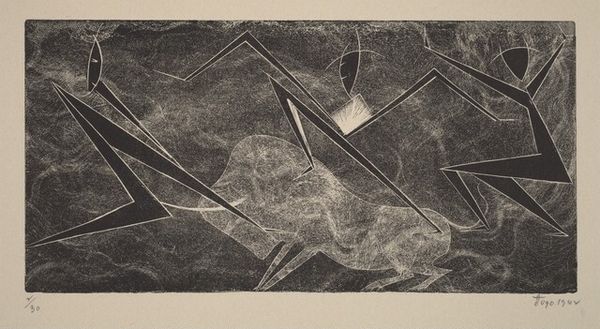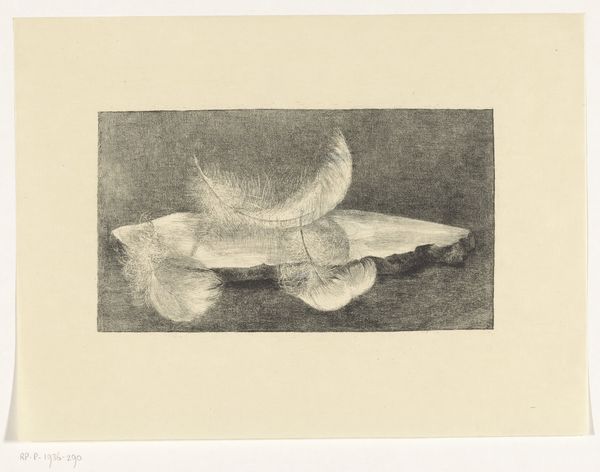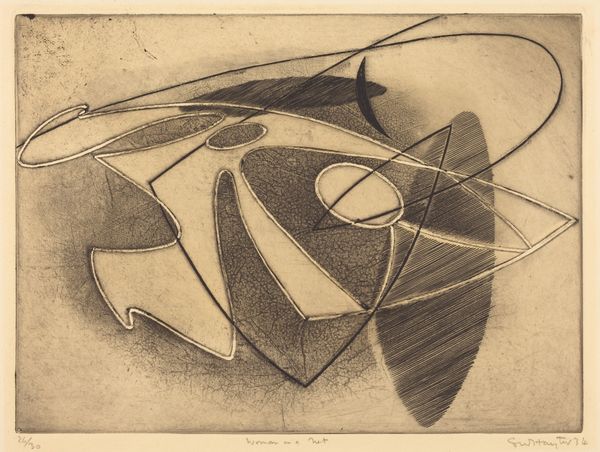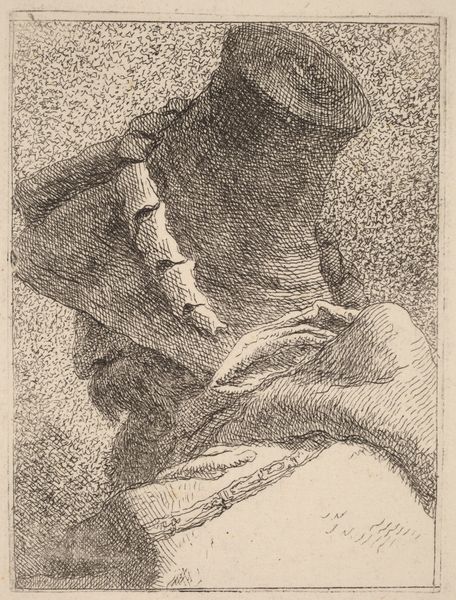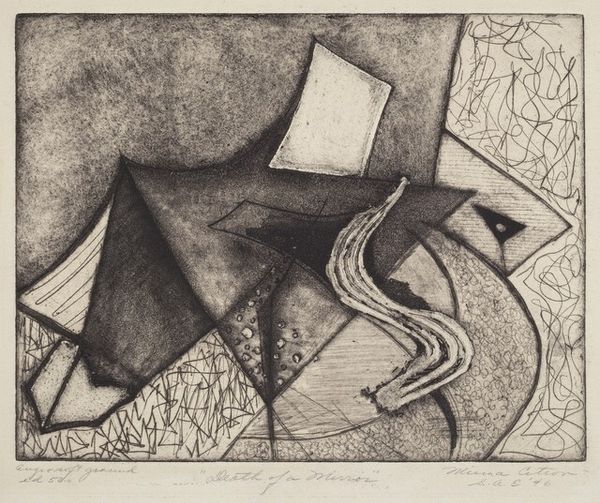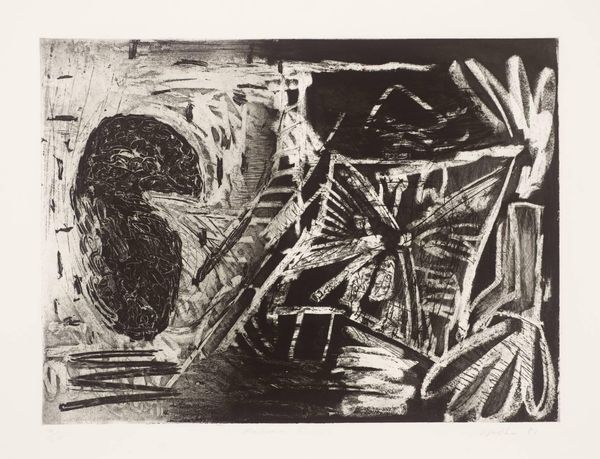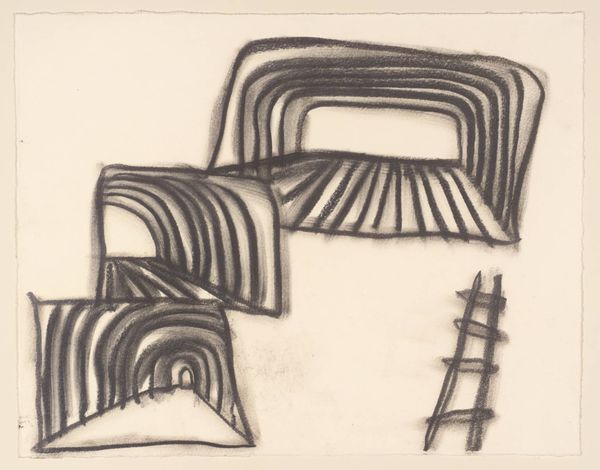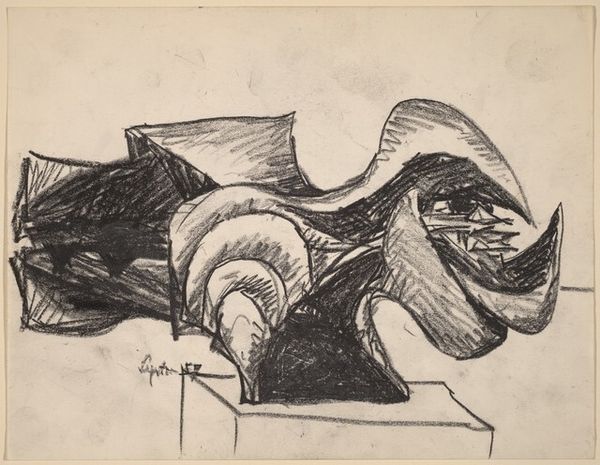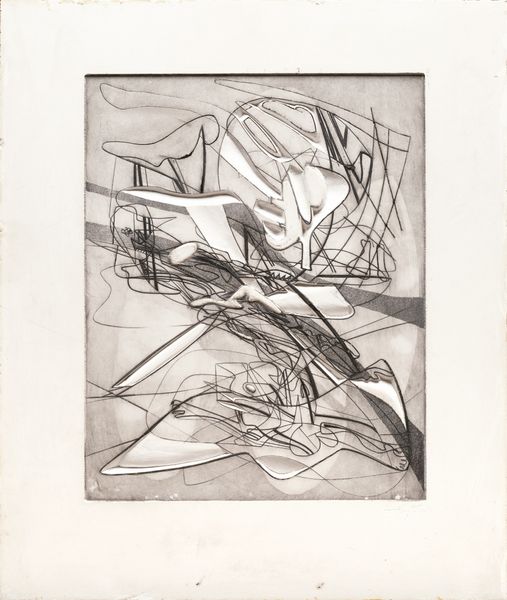
drawing, pencil
#
pencil drawn
#
drawing
#
pencil sketch
#
form
#
pencil drawing
#
geometric
#
pencil
#
expressionism
#
abstraction
#
line
#
pencil work
Dimensions: height 245 mm, width 280 mm
Copyright: Rijks Museum: Open Domain
Curator: Looking at this fascinating pencil drawing by Samuel Jessurun de Mesquita from 1921, titled "Geabstraheerde vogel"—"Abstracted Bird"—one immediately sees a kind of geometrical puzzle, doesn’t one? Editor: Yes, it's quite striking. The texture created by the pencil work immediately draws the eye. It feels almost…industrial, despite being an ostensibly organic subject. Curator: De Mesquita’s personal history profoundly shapes how we might understand this image. As a Jewish artist during a period of rising antisemitism culminating in the Holocaust, his work frequently engages with themes of transformation, identity, and vulnerability. Editor: And how that translates into the materiality is fascinating. He used pencil, a relatively humble material, to render these quite powerful forms. The repetitive lines speak to a kind of labor, almost obsessive, and remind us that this image, despite its seeming simplicity, demanded dedicated work to bring it into existence. Curator: Precisely. It moves us beyond pure aesthetics. The fracturing of the bird form might be viewed as a visual metaphor for the fragmentation of identity experienced by marginalized communities, particularly during the interwar period. The "abstracted" bird becomes a poignant symbol of displacement. Editor: It’s intriguing to think about the artist’s own consumption, too – both his uptake of new formal ideas like Expressionism, and his practical choices about art supplies. Considering these pencil strokes, and the process they came from, can challenge the romantic notion of artistic genius. It acknowledges the realities of making art within constraints. Curator: Yet it also allows for transcendence. The artist wrestles with constraints—social, political, and artistic—to create an enduring work that speaks to universal experiences of loss and resilience. The piece challenges viewers to question, what does freedom even mean in the face of adversity? Editor: Looking at the textures again, I realize how effectively the lines simulate the plumage of a bird while simultaneously breaking it down into something entirely different. The drawing encourages a closer examination of labor and perception, challenging how value and status is produced. Curator: Ultimately, this “Abstracted Bird” speaks to the complexities of existence itself. Art such as this helps us face the disquieting realities of our world and encourages dialogue around issues of identity, memory, and social justice. Editor: I agree, and analyzing this work via its physical process and placement in its period draws out meanings we might miss focusing just on the symbolic qualities.
Comments
No comments
Be the first to comment and join the conversation on the ultimate creative platform.

